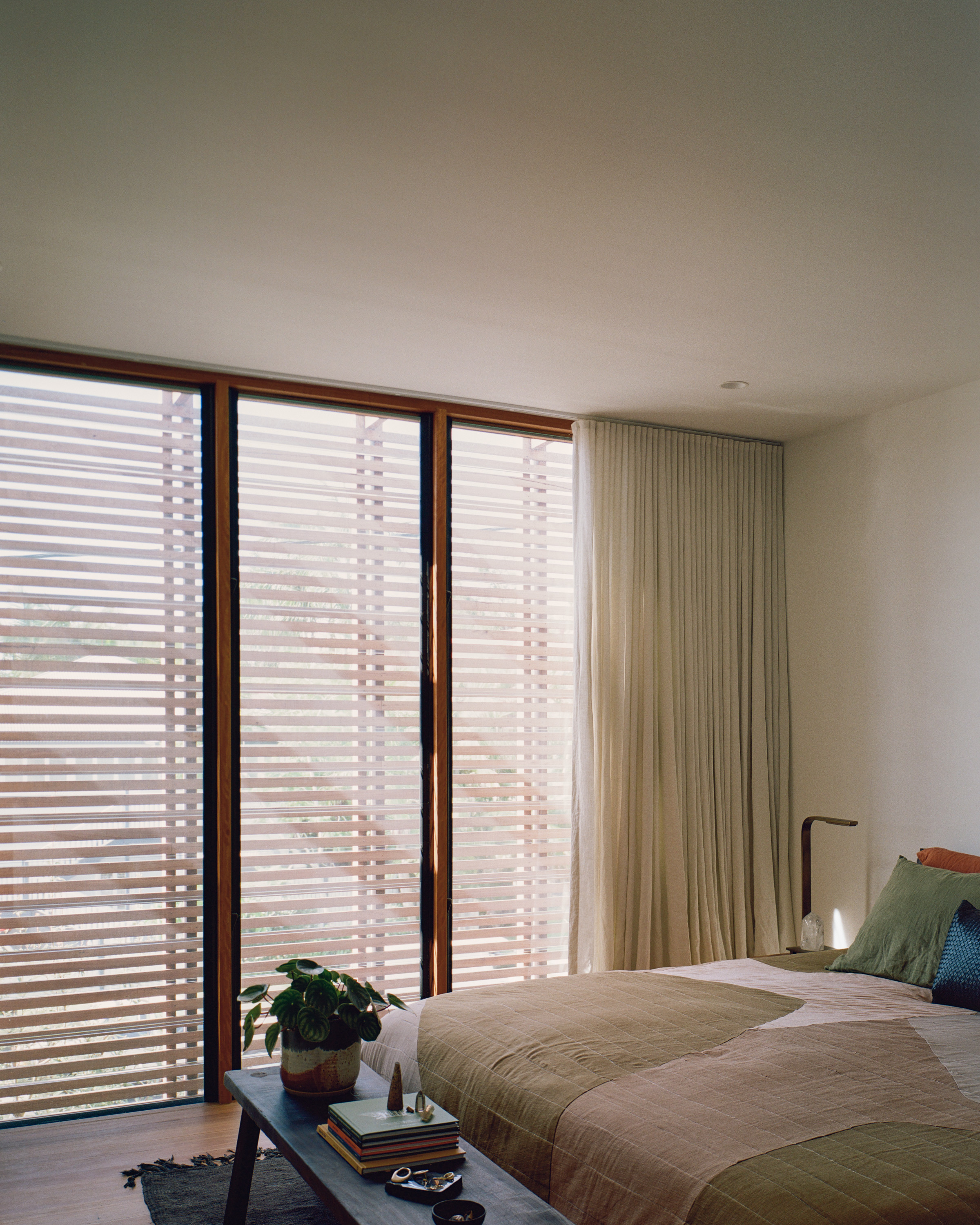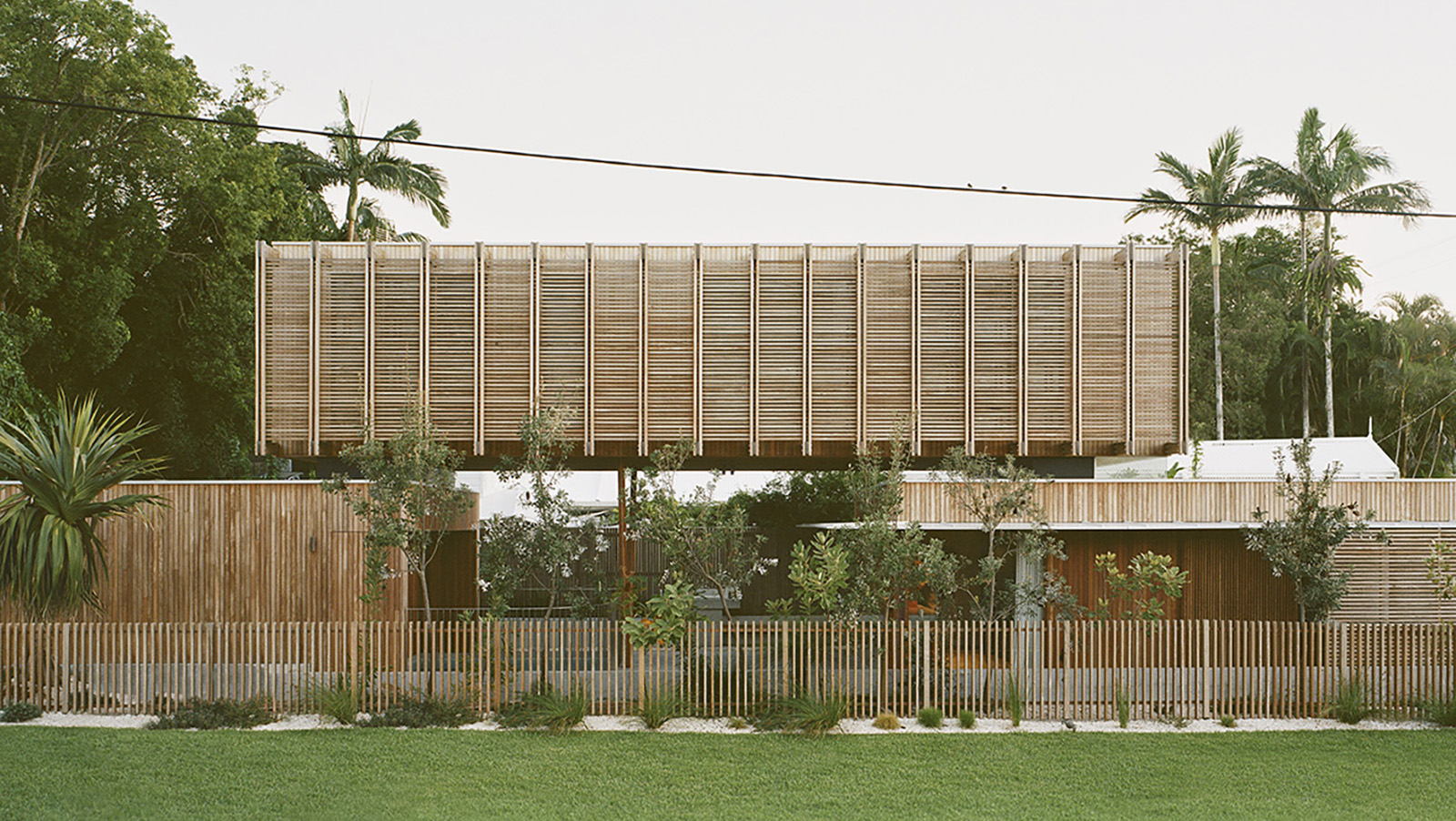
A newly built Byron Bay house in Australia shows off an elaborate, timber façade in this latest project by locally based, east Australian architecture practice Son Studio. The home's design, led by studio founder Scott Jackson, aims to feel organic within its context and connected with its surroundings, while at the same time providing a haven for its users.
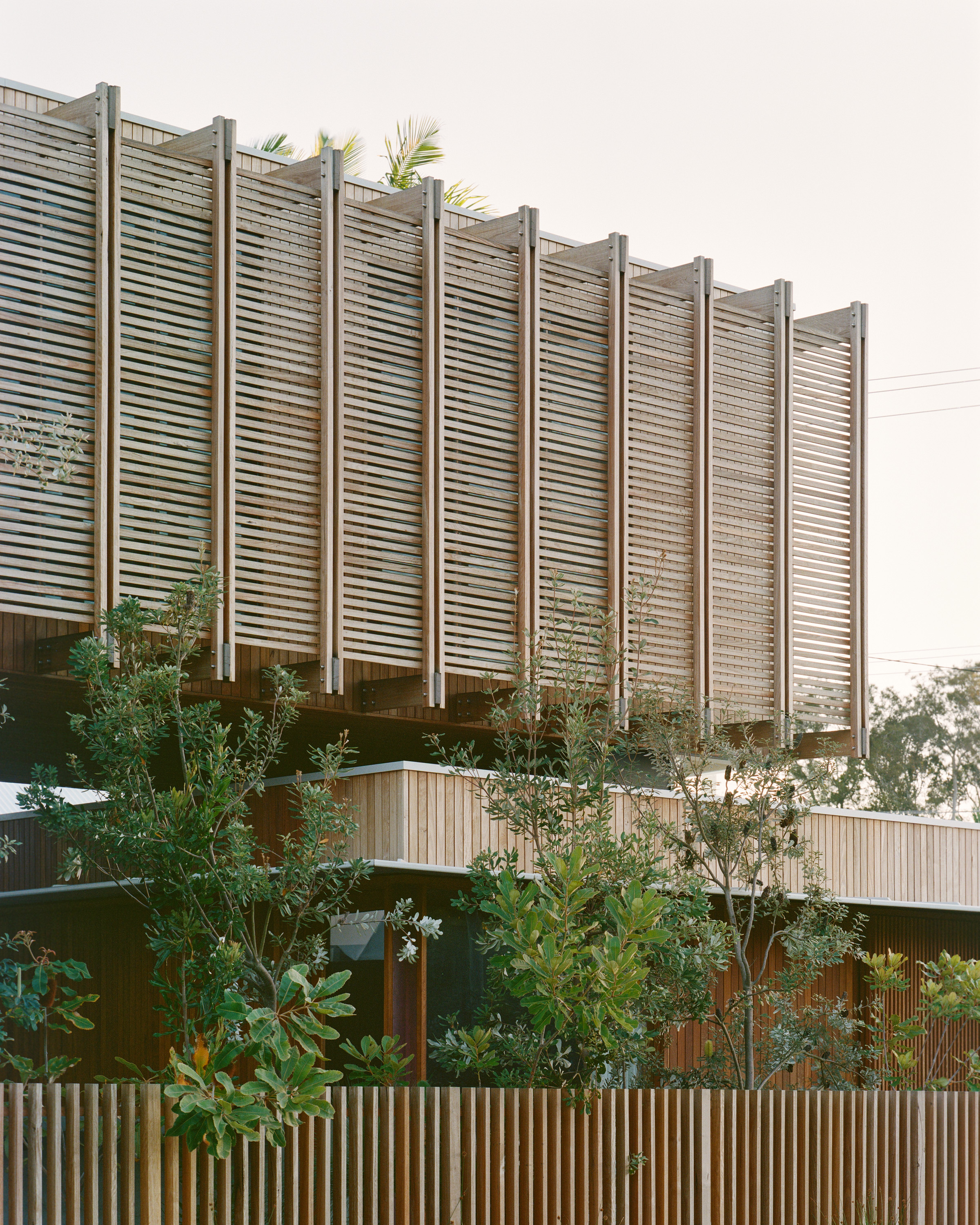
Discover this Byron Bay house
The residence's timber exterior skin defines its design. Through this prominent element, the practice aimed to evoke a sense of 'discovery and revelation'. The design should also encourage curiosity, the team adds.
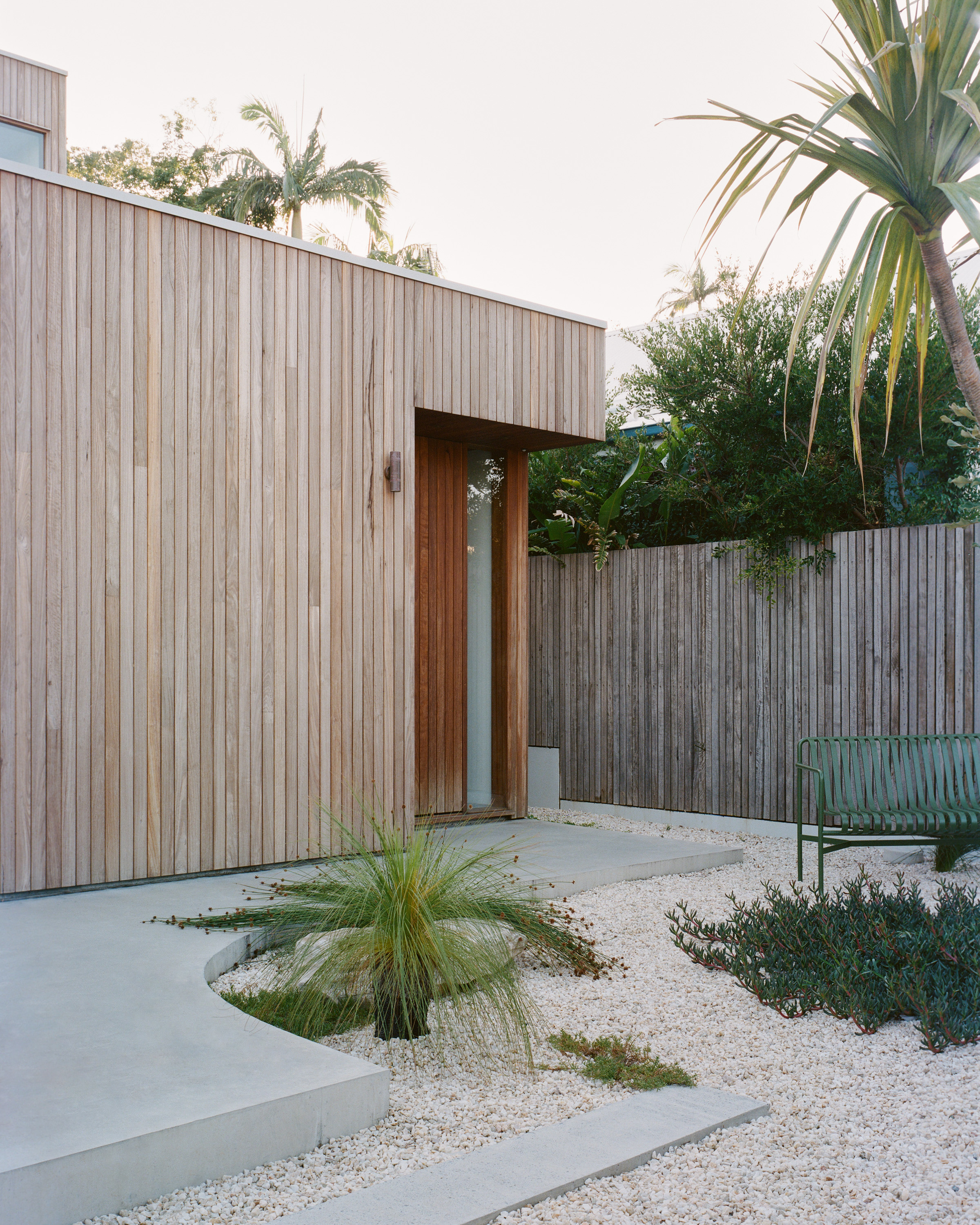
'The layering of various timber screening elements not only shields residents from the street but also creates a fluid spatial experience that emphasises the progression of time through the ever-shifting light that filters throughout the home. The curation of vistas via the screening devices transforms the act of looking outwards into a poetic experience, offering varying glimpses of the site, gardens and street – framed differently depending on one's vantage point,' Jackson writes.
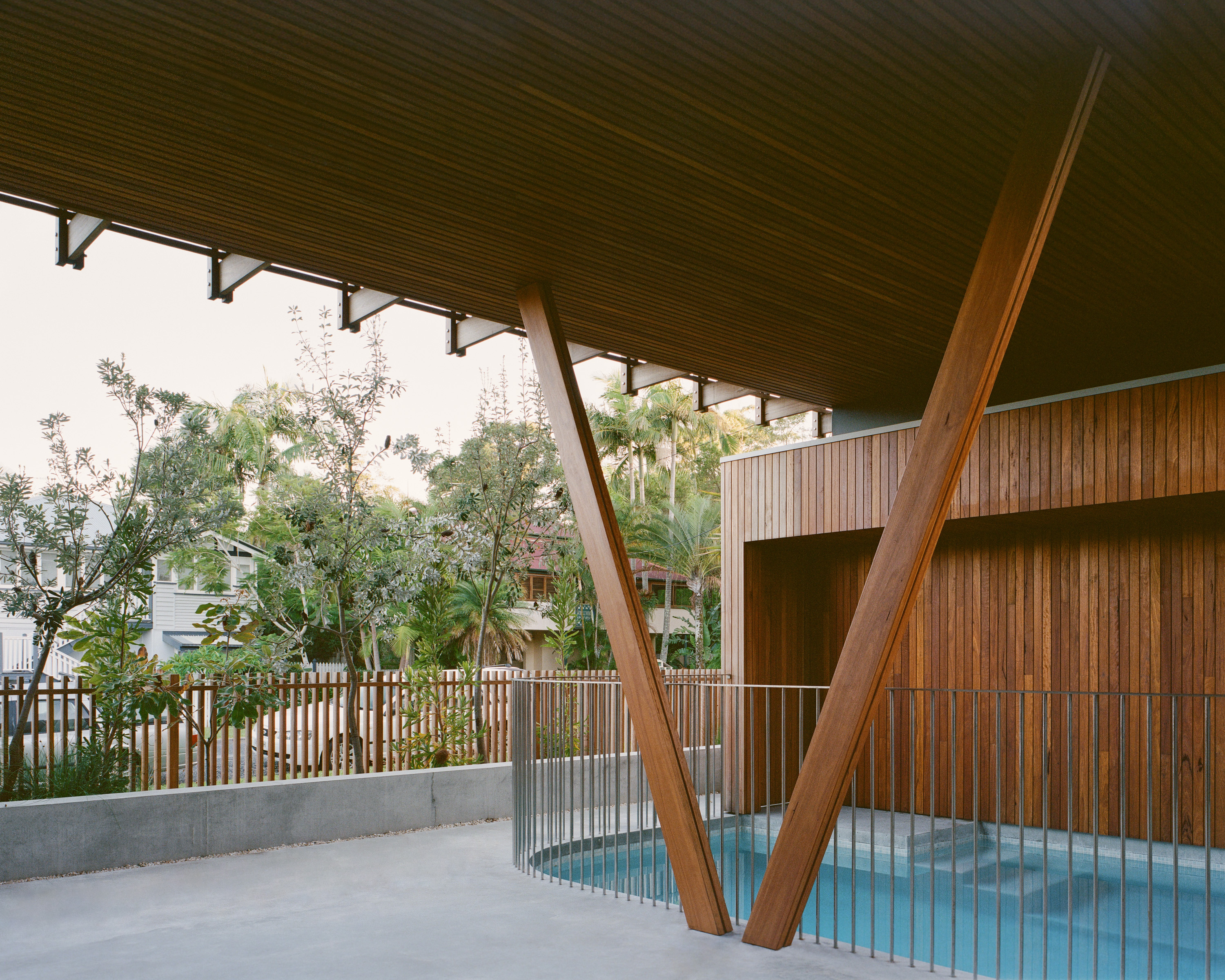
The wood for the project, alongside other key raw materials, was locally and sustainably sourced. The selection includes native hardwood and tactile surfaces that balance minimalism and a nature-friendly approach.
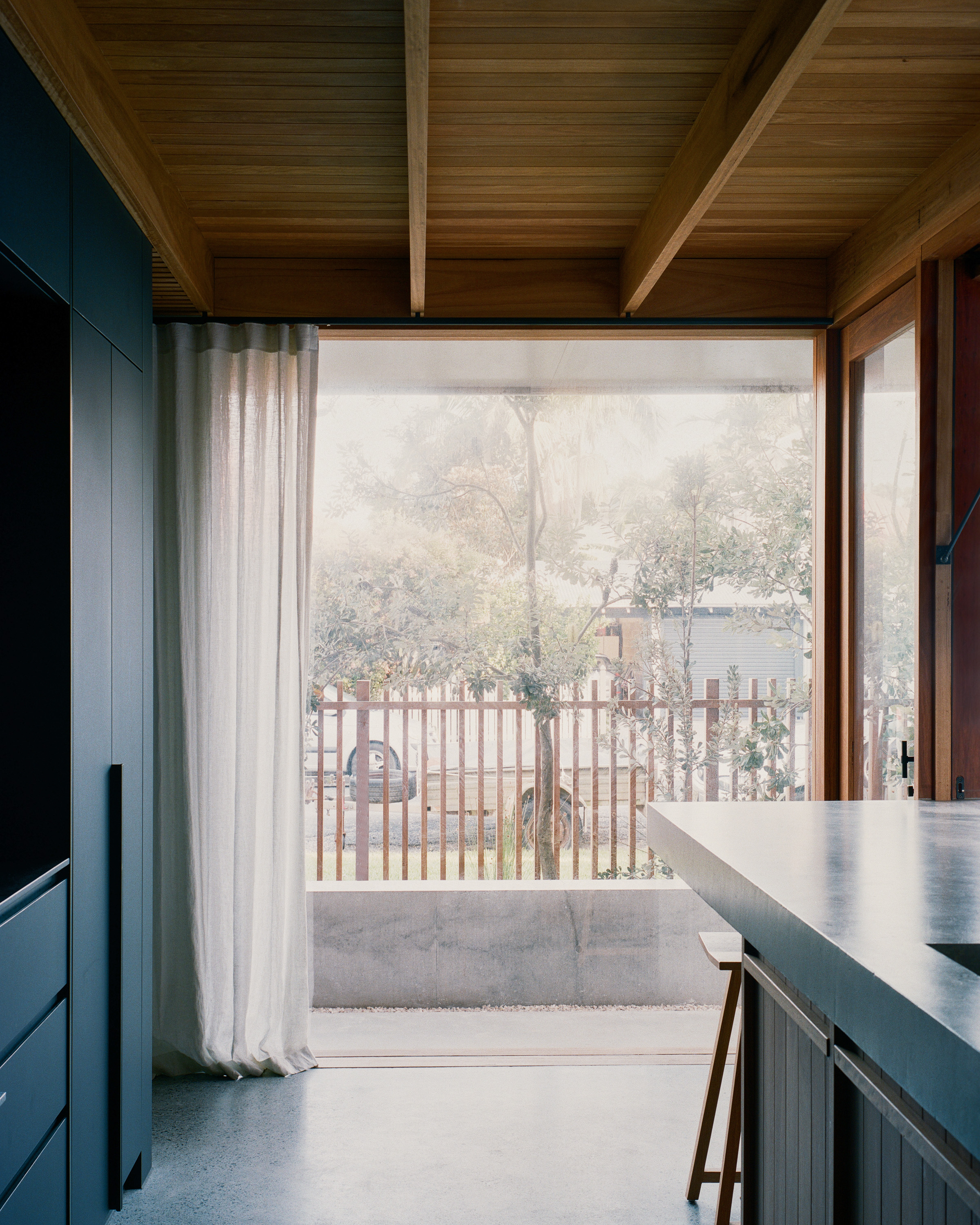
The project is arranged around a central courtyard, with three rectangular volumes containing the dwelling's main functions.
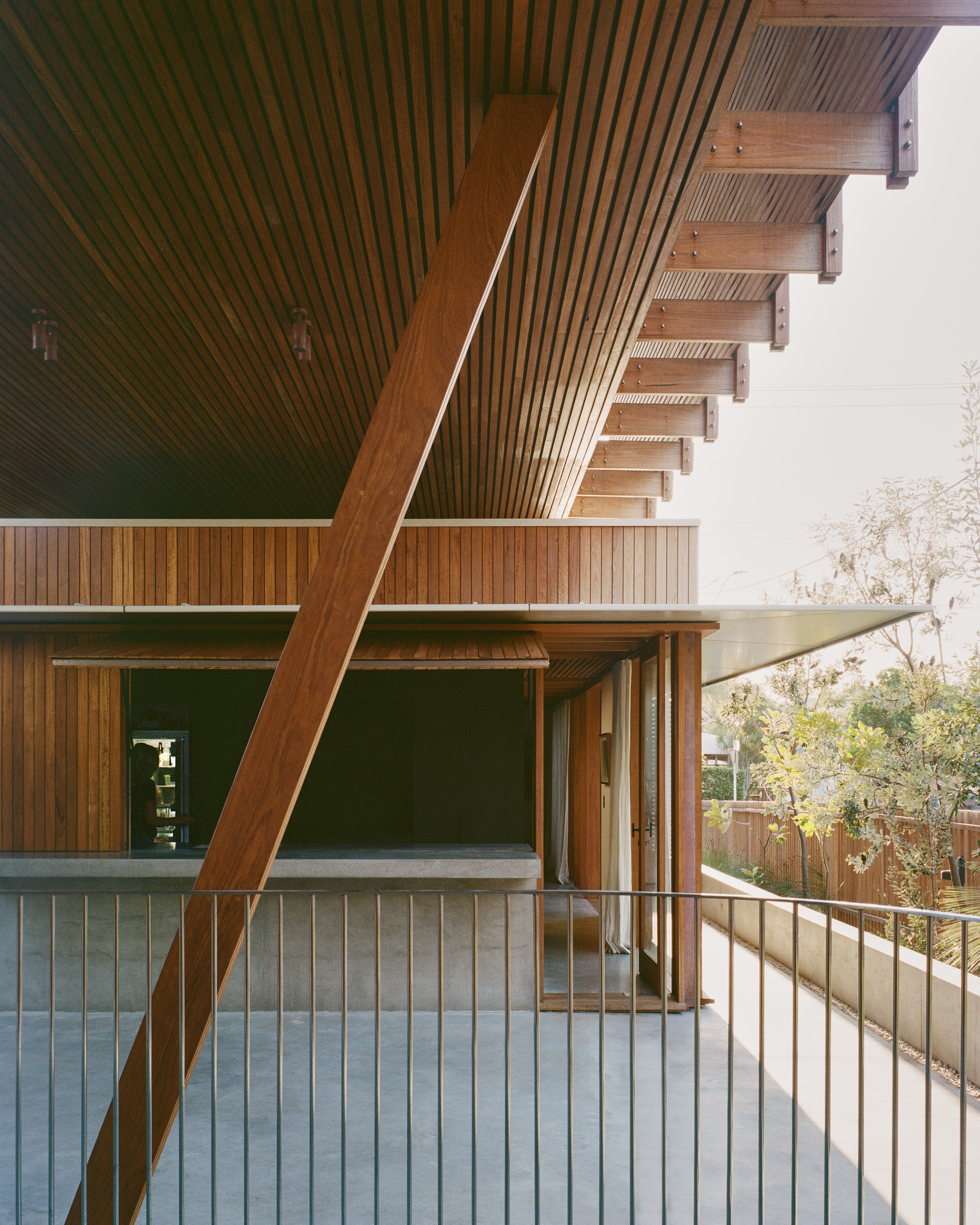
Jackson writes: 'When open to the courtyard, the home fosters a social atmosphere and dialogue between interior and exterior environments. When seclusion and privacy are sought, solid openings provide the means to close off the space, ensuring the occupants are shielded from view from the street.'
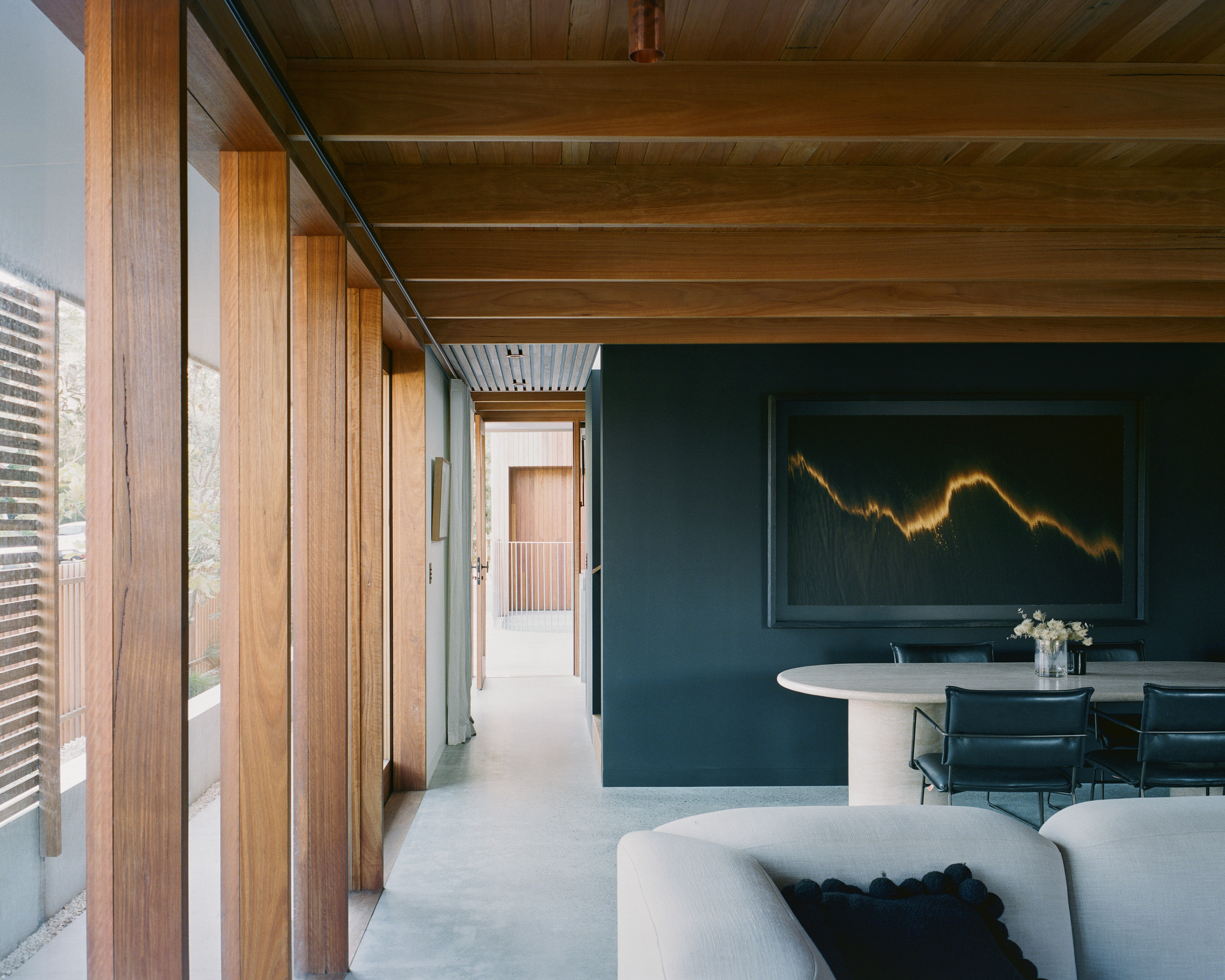
The three volumes are set at two different levels – one appearing to float above the other pair. This mitigates the site's limitation in terms of orientation and size and comfortably contains the three-bedroom home's programme.
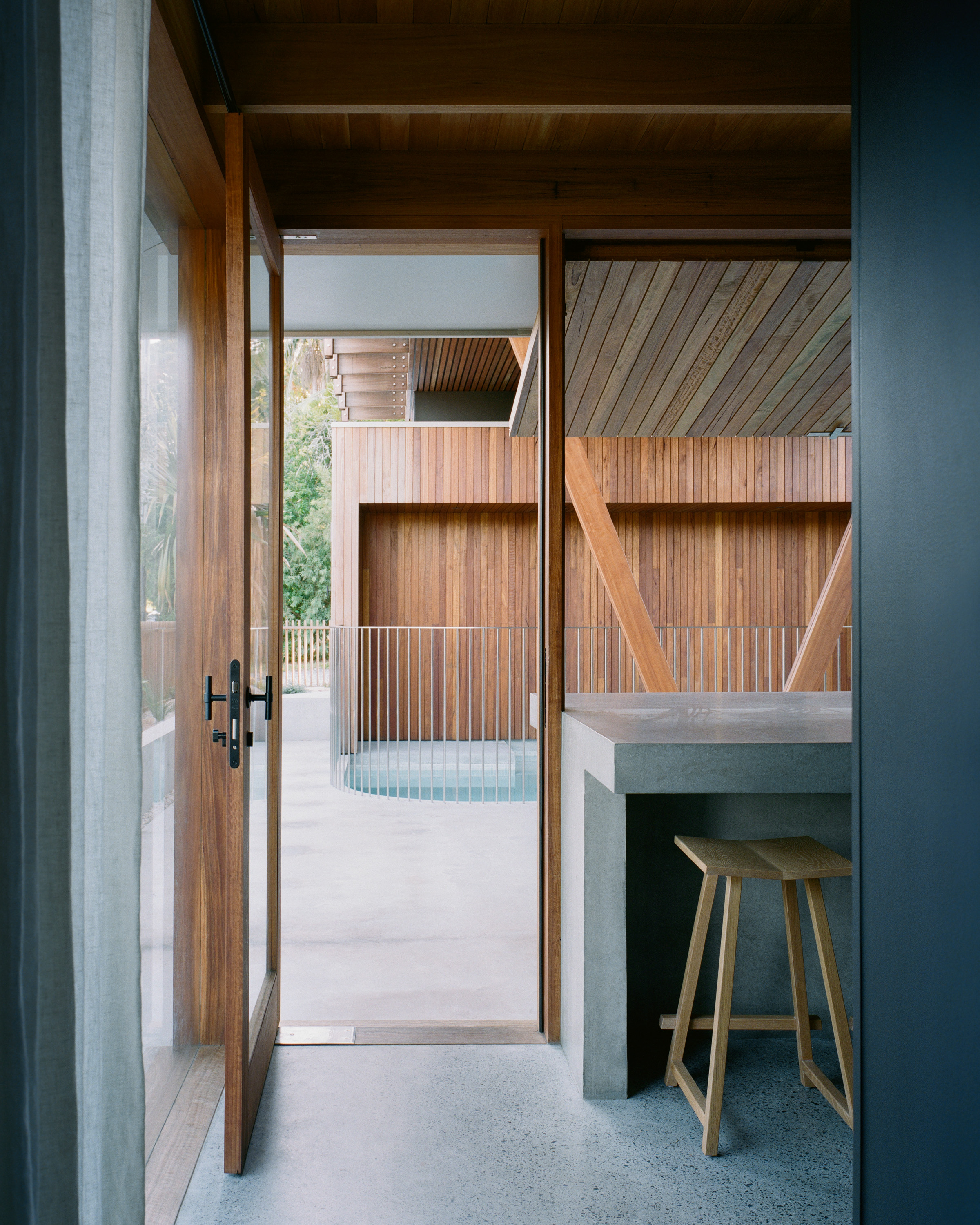
Jackson adds: 'Functional performance was achieved through strategic use of screening mechanisms, shielding dwellers from the street while allowing ample light and outlook. Horizontal battens allowed broad outward vistas from the upper level while obstructing street-level views from below, achieving openness and privacy simultaneously and mitigating solar radiation on a home without traditional eaves.
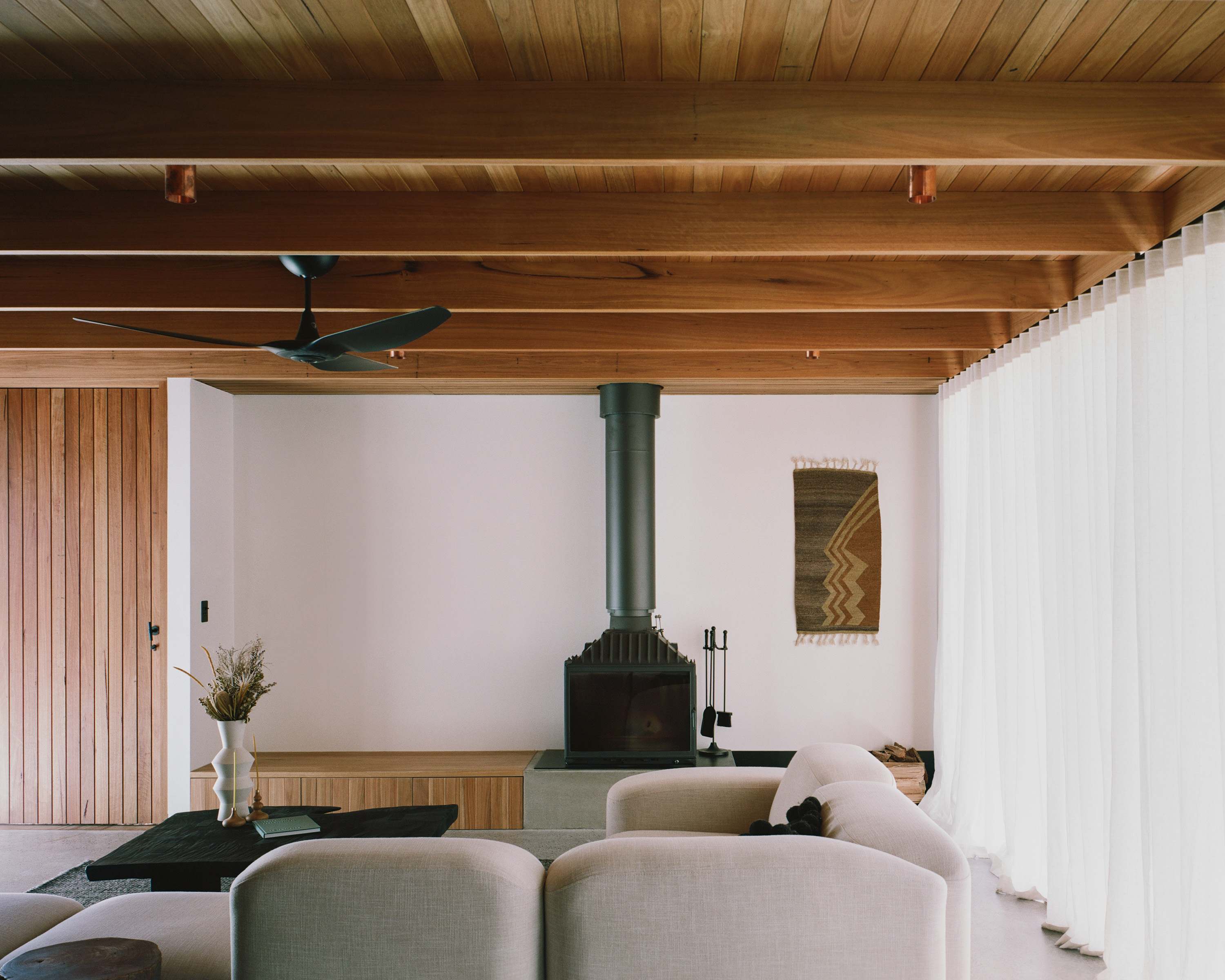
'The screen, owing to its scale/detailing integrates with the architecture, serving as an outer skin, diffusing the solid upper volume and producing a veil-like effect amid the ever-shifting dappled light.'
